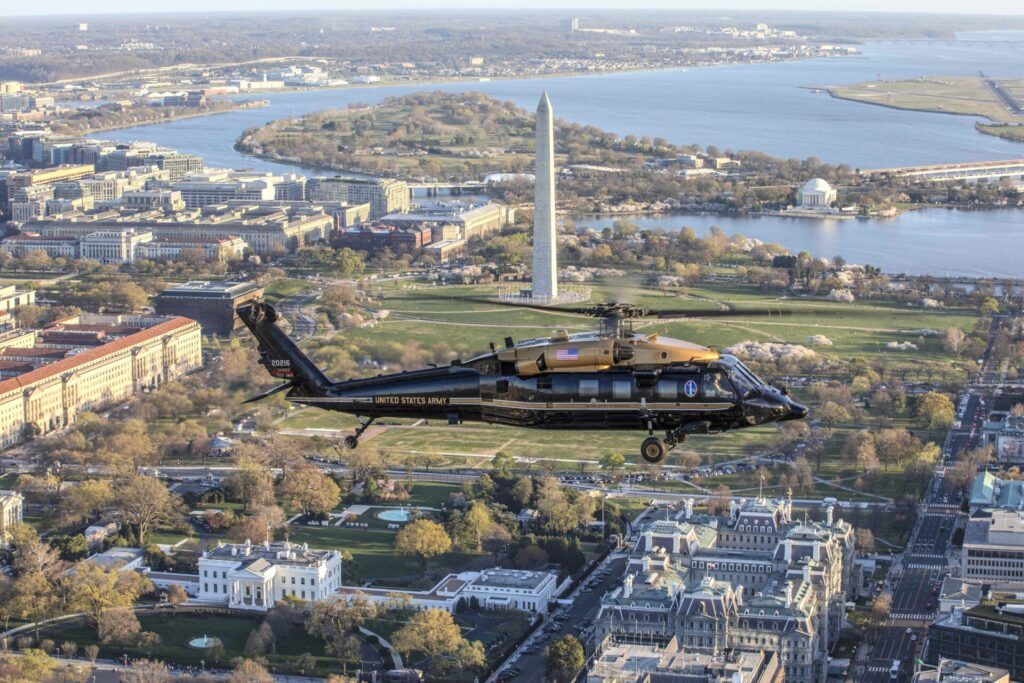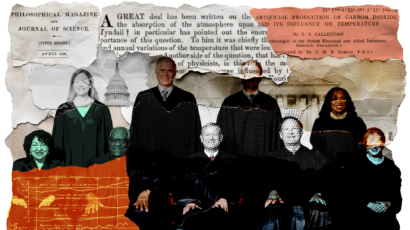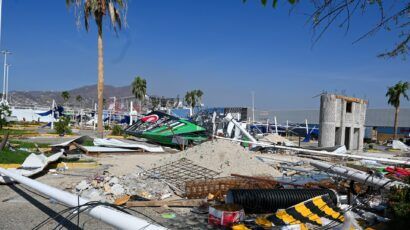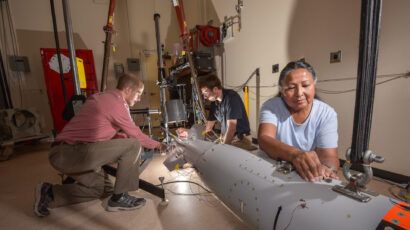The DC plane crash: Was the helicopter crew practicing for disaster before it became involved in one?
By François Diaz-Maurin | January 31, 2025
 A US Army VH-60M Black Hawk helicopter flies past the White House in Washington, D.C. on March 25, 2024. The Army's 12th Aviation Battalion uses VH-60M "gold top" Black Hawks to conduct priority air transport in support of Department of the Army senior leadership and other senior Department of Defense officials. (Credit: Nicholas Priest / US Air Force)
A US Army VH-60M Black Hawk helicopter flies past the White House in Washington, D.C. on March 25, 2024. The Army's 12th Aviation Battalion uses VH-60M "gold top" Black Hawks to conduct priority air transport in support of Department of the Army senior leadership and other senior Department of Defense officials. (Credit: Nicholas Priest / US Air Force)
Nuclear policy and security experts warned that President Trump’s second term could be more erratic, darker, and more dangerous. But they may have underestimated one important aspect that has already defined Trump’s first weeks in office: How the president’s unstable personality might affect decisions that have unrecognized implications—including for nuclear policy.
A demonstration of such tangential connections came on Thursday when President Trump immediately sought to blame air traffic controllers—and diversity requirements at the Federal Aviation Administration (FAA) and other Biden and Obama administration policies in particular—for the crash of a plane near Washington D.C. on Wednesday night. The crash killed 67 people after a commercial aircraft collided with a US military helicopter near Reagan National Airport, the worst such accident since 2001.
Blaming others. At a news conference on Thursday morning, the President did not cite any evidence in support of his suggestion that diversity efforts in the hiring of air traffic controllers had caused the crash. Instead, Trump explained that his judgment was based on his “common sense.” President Trump also emphasized the importance of “psychological quality” to work in aviation safety.
Later on Thursday, he signed an executive order for the immediate assessment of aviation safety and for halting the hiring of “individuals with ‘severe intellectual’ disabilities in the FAA.” The leading disability organizations quickly responded, qualifying Trump’s blame of the deadly crash on disabled federal workers as “baseless” and “irresponsible.” That blame game was also arguably a reflection of Trump’s own psychological state, which was on full display at the White House on Thursday.
In addition to an internal preliminary FAA report suggesting that the control tower may have been understaffed at the moment of the accident, evidence emerged during the day that the controller did instruct the military helicopter to “pass behind” the aircraft, which was on its final approach before landing, to which the pilot responded, “The aircraft’s in sight,” only moments only before the collision. Evidence later pointed to a possible lack of safeguards involving the Army helicopter and the likelihood that it was flying at a higher altitude than prescribed.
Continuity of government mission. At that same Thursday press conference, newly appointed US Defense Secretary Pete Hegseth confirmed that “there was some sort of an elevation issue” involving the US Army Black Hawk helicopter, and it was being investigated. Hegseth added that the helicopter on Wednesday was on a “routine annual re-training of night flights on a standard corridor for a Continuity of Government mission.” The president later said of that mission, “I don’t know what uh what that refers to,” and seemed to understand the term continuity as “continuity of good people,” referring again to hiring requirements.
Continuity-of-government missions are designed to keep the president and top administration officials alive in the event of a national emergency. The government office in charge of designing national continuity programs depends on the Federal Emergency Management Agency, or FEMA, the agency that Trump vowed to shut down last week after blaming it for the Los Angeles fires of early January—again providing no evidence to back the accusation.
Continuity-of-government missions typically involve the rapid movement of federal government officials in a situation that threatens the functioning of the executive branch. These missions require that helicopters are on standby at Joint Base Andrews near Washington, D.C., ready to transport government officials at any moment should a catastrophe happen. Such situations could include natural disasters, terrorist attacks, and other manmade disasters. They also include larger threats to public safety—including an incoming missile or nuclear attack. According to Garrett Graff, a journalist and historian who has studied continuity-of-government missions for years, in Washington, the plan includes the emergency evacuation of the president and about 20 or so other senior officials.
Almost as soon as the first atomic bombs were created, US officials began planning for continuity of government in the event of a nuclear attack. The plans led to the construction of underground bunkers across the country, inside which surviving senior US government officials could be hidden away and continue to pursue their government responsibilities. Continuity of government missions gained new attention after the 9/11 terrorist attacks, which led to the consideration of more peacetime disaster scenarios.
A fantasy? The stated goal of FEMA’s continuity-of-government plans—which also include guidance for state, local, tribal, and territorial governments—is to ensure that the delegation and succession of power can reach the appropriate organizational level, despite a major disruption in governance. It is unclear if such a result is possible during a nuclear war.
In her recent book, Nuclear War: A Scenario, Annie Jacobsen calls the continuity-of-government plans that would be followed during a nuclear attack a “fantasy.” FEMA is the agency in charge of protecting the US population in the event of hurricanes, floods, or earthquakes. And what happens during a nuclear war? “There wouldn’t be any population protection planning because everyone would be dead,” Jacobsen explains. “The madness and mayhem and anarchy that would follow … in the event of a nuclear war, you really get the sense that civilization will fail.”
Even so, continuity planning could help sustain government during emergencies less dire than all-out nuclear war. Whether continuity-of-government missions could succeed in a government that has interest in closing the very agency responsible for such missions is another question altogether.
Together, we make the world safer.
The Bulletin elevates expert voices above the noise. But as an independent nonprofit organization, our operations depend on the support of readers like you. Help us continue to deliver quality journalism that holds leaders accountable. Your support of our work at any level is important. In return, we promise our coverage will be understandable, influential, vigilant, solution-oriented, and fair-minded. Together we can make a difference.
















The author misuses the word “anarchy” in her book